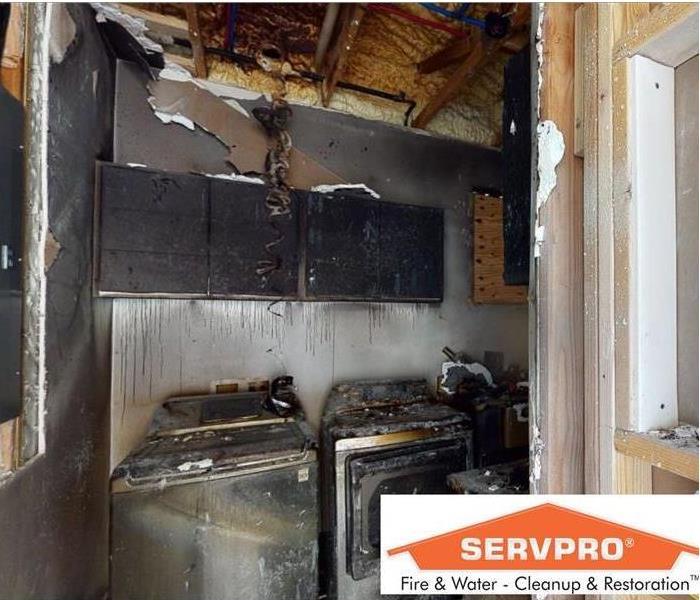Dryer Lint Fire Prevention
5/1/2023 (Permalink)
While it is easy to forget to clear dryer lint between loads of laundry, this small oversight can have severe consequences. In fact, according to the U.S. Fire Administration, there are approximately 2,900 dryer-related fires each year, accounting for $35 million in property loss, five deaths, and 100 injuries. Additional facts include:
- 34% of people regularly fail to clean their dryers, making it the leading cause of home clothes dryer fires
- Dryer fires occur most prominently in the fall and winter, spiking in January
Keeping an eye on your dryer lint is an easy way to prevent fire damage to your home or business and keep yourself safe. This article outlines the ways dryer lint can pose a fire threat, how to safely ensure your dryer lint is regularly disposed of, and how SERVPRO® can help if your dryer catches on fire.
What is Dryer Lint?
According to Merriam-Webster Dictionary, lint is defined as “Fuzz consisting especially of fine ravelings and short fibers of yarn and fabric.” In other words, it is the material that comes off clothing, towels, and other cloth during the drying process. If not regularly emptied between loads, your lint trap could become stuffed with lint to the point of being a hazard. Combined with the friction and heat of a dryer, fires could be triggered during routine laundry duties.
Dryer Vent vs. Lint Trap
Before we get into precautionary tips, it is important to outline the difference between two commonly confused parts of a dryer: a dryer vent, and a lint trap. So, what’s the difference?
This resource on Whirlpool’s website outlines the internal and external parts of a dryer. According to Whirlpool, a lint trap is “located either on the exterior of the dryer or the inside door opening. It collects lint and debris as it passes through the dryer vent.”
Allwords defines a dryer vent as “A vent connected to a clothes dryer that is used to screen lint and remove exhaust.”
Dryer Lint Fire Prevention Tips
According to the U.S. Fire Administration, the following tips can help prevent dryer lint and other laundry-related fires:
- Every three months, clean lint out of the vent pipe
- Clean behind the dryer where lint can build up
- Use a nylon brush to clean the lint filter every six months (or more often) to prevent clogging
- Have a professional regularly inspect and clean your dryer, especially when it is taking longer than normal to dry
- Unplug or disconnect the dryer if you will be away for an extended period
- Ensure the area surrounding the dryer is free of materials that may catch fire
Furthermore, there are two things you shouldn’t do:
- Do not use a lint filter that is clogged, damaged, or loose
- Do not use a dryer without a lint filter
Ultimately, one of the easiest tips to remember (mentioned at the beginning of this article) bears repeating—clean out your lint trap between each load of laundry, and you will substantially reduce the chance of fire.

 24/7 Emergency Service
24/7 Emergency Service
